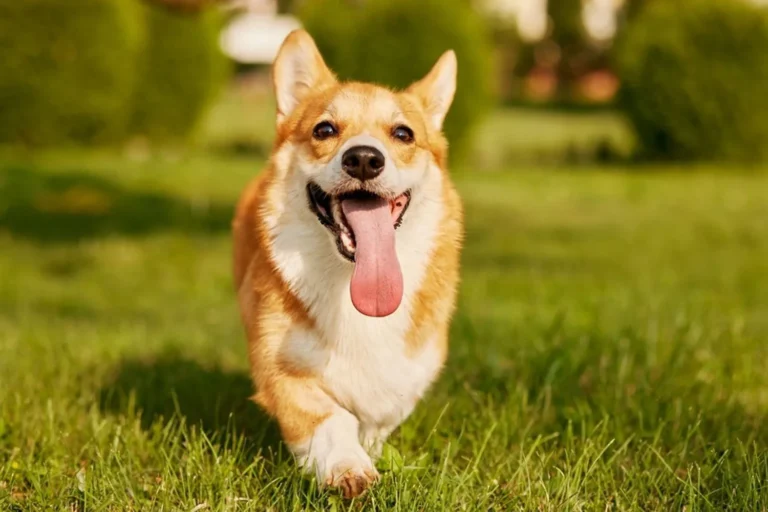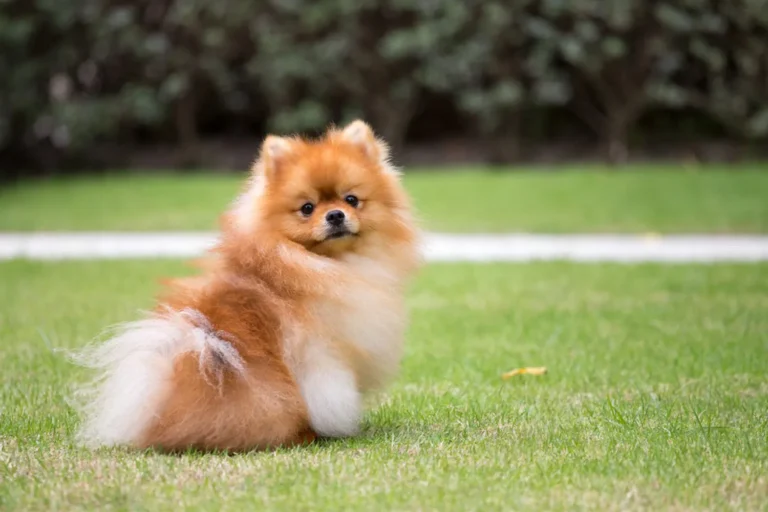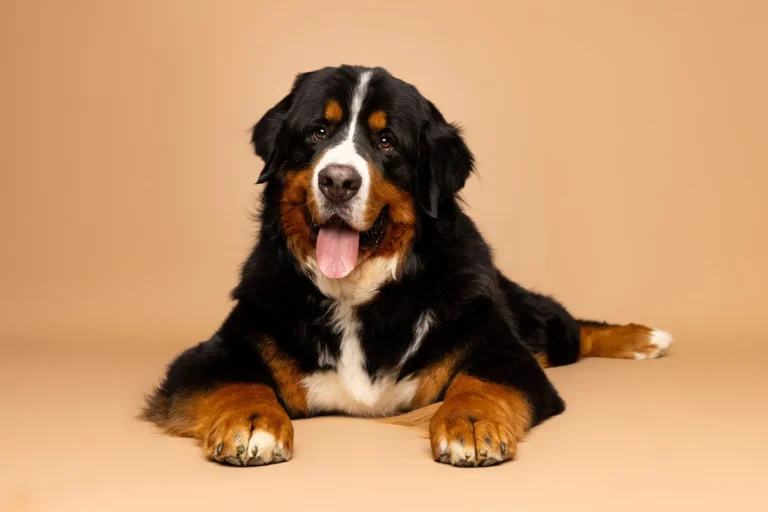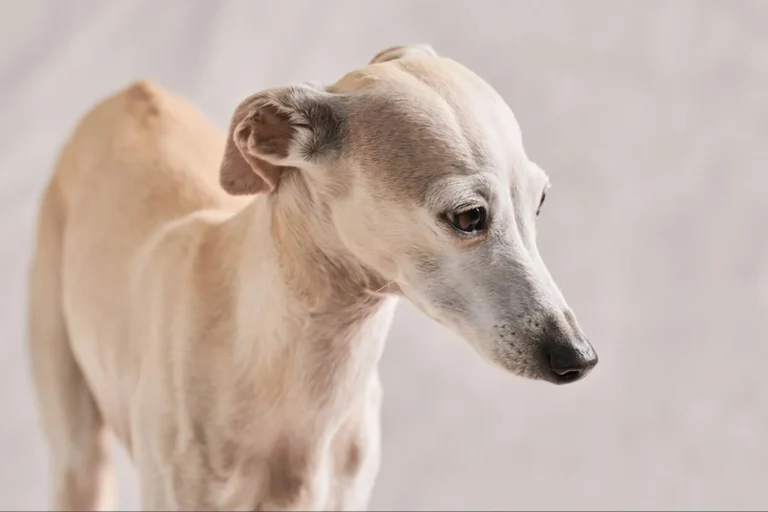
They may not top the “most photogenic” charts, but Bulldogs are adored for all the right reasons. My neighbor’s Bulldog, Mabel, waddles like a wind up toy and wins every heart on the block with one snort and a head tilt.
Their magic is in the soulful eyes, goofy grumbles, and rock-solid companionship. Keep a drool cloth handy, enjoy mellow strolls, and embrace the couch cuddle life Bulldogs have been family favorites for generations, and once you’ve met one, you get why.
History and Origin of the Bulldog
The Bulldog’s story begins in the British Isles, where it’s believed to descend from the Asiatic Mastiff and even have a dash of pug influence. In their earliest days, Bulldogs weren’t couch potatoes at all. They worked as drovers, helping move cattle to market along busy roads. I once walked an old drover’s lane in the countryside and tried to imagine those sturdy little powerhouses nudging stubborn cattle forward, all determination and grit. It’s a funny contrast to the mellow snorers most of us know today.
Of course, there’s a darker chapter too. Bulldogs were used in bull baiting, a brutal sport where dogs were set against bulls. It’s a sad part of their history, and I’m always relieved to remember that the practice was outlawed in the 19th century. The original Bulldogs were leaner, more athletic, and bred for tenacity rather than cuddles. My grandfather had an old print of a bull baiting scene in his study; even as a kid I thought, “How could the same breed now be so sweet and sofa loving?”
After bull baiting ended, breeders shifted the Bulldog’s role from fighter to family companion. Over time, the temperament softened into the affectionate, steady, famously wrinkled character that steals so many hearts today. I met a Bulldog named Winston in a city park once he plopped down on a bench like a grumpy old gentleman, accepted ear scratches with a sigh, and then refused to move until bribed with a biscuit. So much for driving cattle.
If you’re thinking about bringing a Bulldog home, consider adopting despite being purebred, plenty land in rescues. A friend who fosters in California says there’s always a waiting list of Bulldogs needing good homes. When you meet them, ask about breathing, heat tolerance, and skin care, and plan for short walks, cool naps, and lots of love. They may be descendants of drovers and fighters, but these days, their favorite sport is snoozing beside their favorite human.
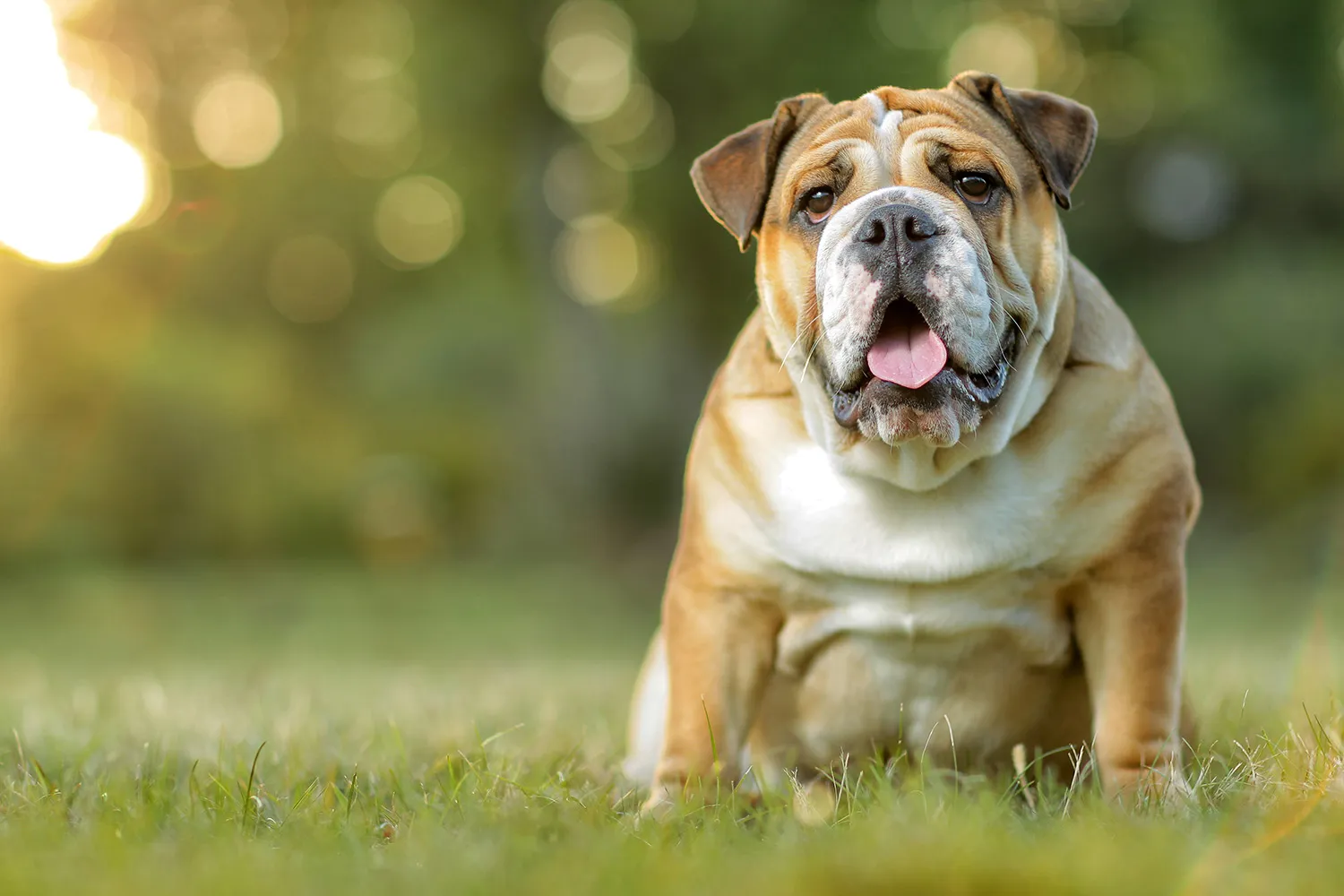
What Is the Bulldog Breed?
If you’ve ever met one, you know exactly why people fall head over heels for Bulldogs also called English or British Bulldogs. They’re medium sized but built like little tanks, all sturdy muscle and swagger, with that famously wrinkled face and the cutest pushed in nose. I still smile remembering a Bulldog named Winston who used to rest his chin on my knee until I gave in and scratched his folds pure charm in a snorty, wiggly package.
Despite their tough look, Bulldogs are softies. They’re gentle, affectionate, and happiest being part of the family routine. Think “couch companion” more than “trail runner.” Short, relaxed walks are their jam, and they love a good nap on a cool floor. One time I tried to teach a Bulldog to fetch; he trotted back once, then set the ball down and gave me a look that clearly said, “Your turn.” They can be a bit stubborn, but with treats and praise, they learn just fine. Keep training sessions short and fun, and they’ll surprise you.
A few basics to know if you’re considering adopting an English Bulldog:
– Life span: typically 8-10 years
– Weight: around 18-23 kg for females; 21-25 kg for males
– Height: generally 31-40 cm
– Common colors: White, Red & White, Red Brindle, Fawn, and Piebald
Care wise, Bulldogs are fairly low maintenance, but their face folds need regular attention. I make a quick “wrinkle wipe” part of the evening routine just a gentle clean and dry to keep the skin happy. They can shed a bit, so a weekly brush helps keep the hair tumbleweeds under control. And yes, there may be drool and snoring. I knew a Bulldog who could out snore my grandfather, and honestly, it was kind of adorable.
Because of their short noses, Bulldogs don’t love heat. Plan walks in the cooler parts of the day, bring water, and keep activities relaxed. They’re great apartment dogs, friendly with kids when properly socialized, and they prefer to be where their people are. If you’re adopting, look for a reputable breeder or a rescue, and don’t be shy about asking questions about breathing, skin, and joint health. A little proactive care goes a long way.
If you want a devoted, cuddly companion with a comedic streak and a heart of gold, the Bulldog might be your perfect sidekick wrinkles, wiggles, snores, and all.
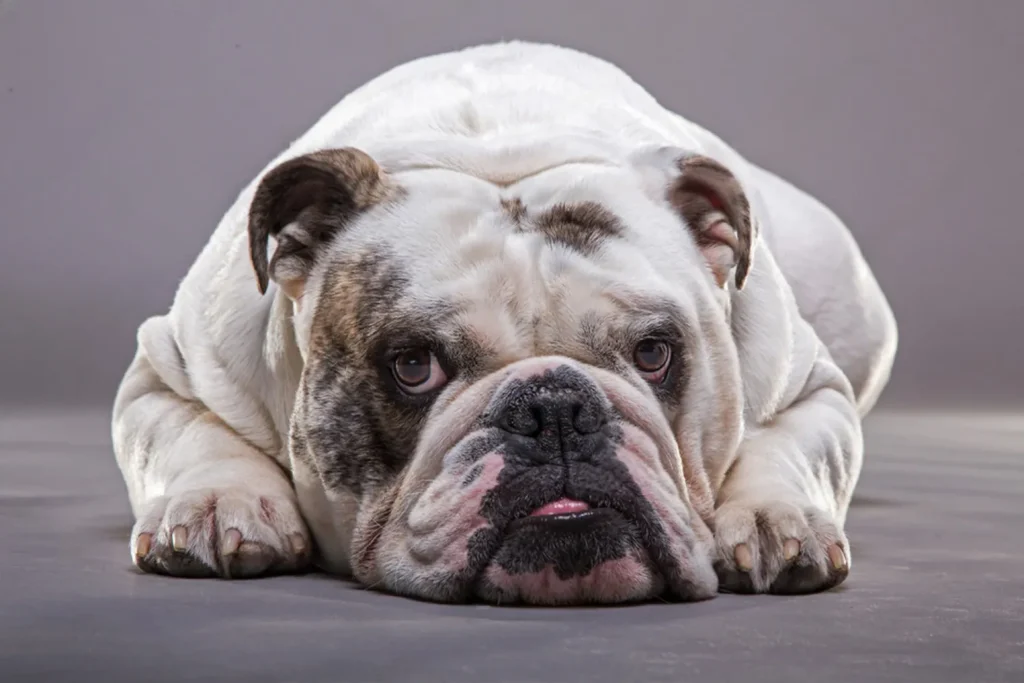
Who Is a Bulldog Best For?
If your household wants a mellow, cuddle ready companion, a Bulldog is a solid fit. That famously wrinkly, slightly grumpy face hides a total marshmallow. Most Bulldogs are gentle with children and sturdy enough to handle clumsy toddler hugs. I once watched my niece toddle over and rest her head on my friend’s Bulldog like he was a living ottoman; he just sighed and wagged his tail. As with any breed, teach kids to be respectful and supervise play, but Bulldogs generally bring a calm, patient vibe to family life.
They’re also wonderful for people who live alone or work from home. Bulldogs are velcro dogs they love to be near their person. When I freelanced from a tiny apartment, a neighbor’s Bulldog would “visit” and park himself under my desk like a snoring foot warmer. They don’t need marathon exercise, just a couple of short, steady walks and some playtime. Apartment dwellers and homebodies appreciate their low key energy and minimal barking. Just know they can be stubborn with training; keep sessions short, upbeat, and treat fueled, and you’ll both be happier.
A few practical notes: Bulldogs are sensitive to heat, so think early morning strolls and a cool home in summer. Keep those adorable face wrinkles clean and dry to avoid irritation, expect some snoring and drool, and be cautious around water Bulldogs are not natural swimmers. From their tough old history to their modern role as gentle sidekicks, English Bulldogs have come a long way, and for the right person or family, they make irresistibly affectionate companions.
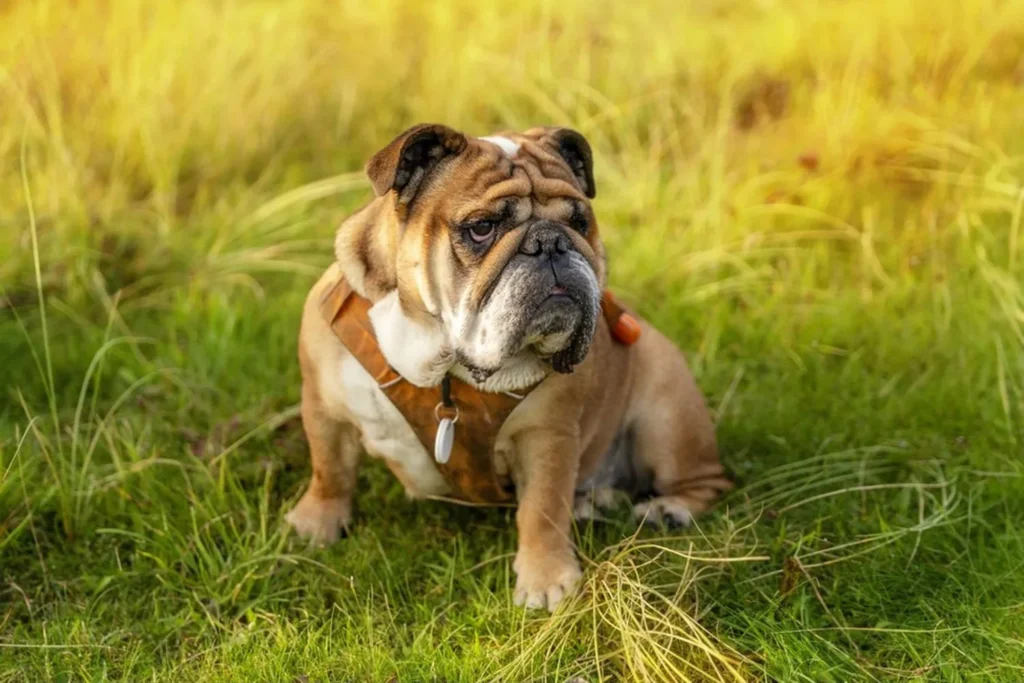
English Bulldog Grooming and Shedding
English Bulldogs have that short, soft coat that feels like velvet and is blissfully simple to manage. If you’ve lived with a Husky or a German Shepherd, you’ll feel like you’re on vacation with a Bulldog. They do shed, but it’s fairly minimal compared to many breeds. You won’t find tumbleweeds rolling across your floors more like the occasional sprinkle on the couch or your black jeans (ask me how I know).
Most of their shedding shows up in the spring as they shake off their winter coat. My first Bulldog, Gus, had a “spring snow” moment where I realized a quick daily brush for a week made all the difference. As they get older, you’ll likely notice the shedding slows down a bit, which is a relief. Gus at two was fuzzier than Gus at seven.
For grooming, a soft bristle brush or a rubber grooming mitt a few times a week is perfect. Keep sessions short five minutes while you’re watching TV or winding down in the evening is plenty. Bulldogs tend to love the attention; my current girl, Dolly, leans into the brush like she’s at a day spa. Brush outside if you can, and finish with a quick wipe down using a slightly damp microfiber cloth to lift any loose hairs and dander. Little tip from a breeder I met in California: a rubber curry brush works wonders around the shoulders and haunches where hair likes to cling.
Bathing is low maintenance too every few weeks is usually enough, unless they’ve found a mud puddle with their name on it. Use a gentle, dog safe shampoo and rinse really well. Dry thoroughly, especially in their skin folds and under the collar; moisture tucked away in those places can cause irritation. While you’re at it, give their facial wrinkles and tail pocket a quick clean and check their ears. Nails should be trimmed regularly short, quiet walks are hard on nails, so they don’t always wear down on their own.
A few housekeeping and coat health hacks that help: keep a lint roller by the door, toss a washable blanket over the favorite sofa spot, and consider adding omega-3s (with your vet’s go ahead) for a healthy, glossy coat. Most days, Bulldog grooming is a breeze short sessions, lots of cuddles, minimal fur drama. And honestly, those five minutes of brushing are some of the calmest moments of my day.

Do Bulldogs Bark a Lot?
In my experience, Bulldogs are pretty modest in the barking department. They’re not the type to announce every passing squirrel. But quiet? Not exactly. Those adorable squished faces come with a whole soundtrack: snorts, grunts, wheezes, and the kind of snoring that can rattle a picture frame. I used to joke that my Bulldog and my partner had a nighttime duet one on the couch, one in the dog bed. If you love cozy, snuffle filled noises, you’ll find it charming. If you’re a light sleeper, you might want to plan where the dog bed goes.
A few tips that have helped me: keep your Bulldog at a healthy weight to tone down the snoring a bit, and try a white noise machine if the nighttime symphony gets too lively. A slightly elevated bed or pillow can help them breathe easier, and I avoid letting mine get overheated in the evening warm rooms make the snorts louder. For the occasional bark at the door, I’ve had good luck teaching a “thank you” or “quiet” cue and then redirecting to a sit for a treat. Just know that the funny snorts and grumbles are part of the package with this breed. It’s all personality, wrapped up in wrinkles.
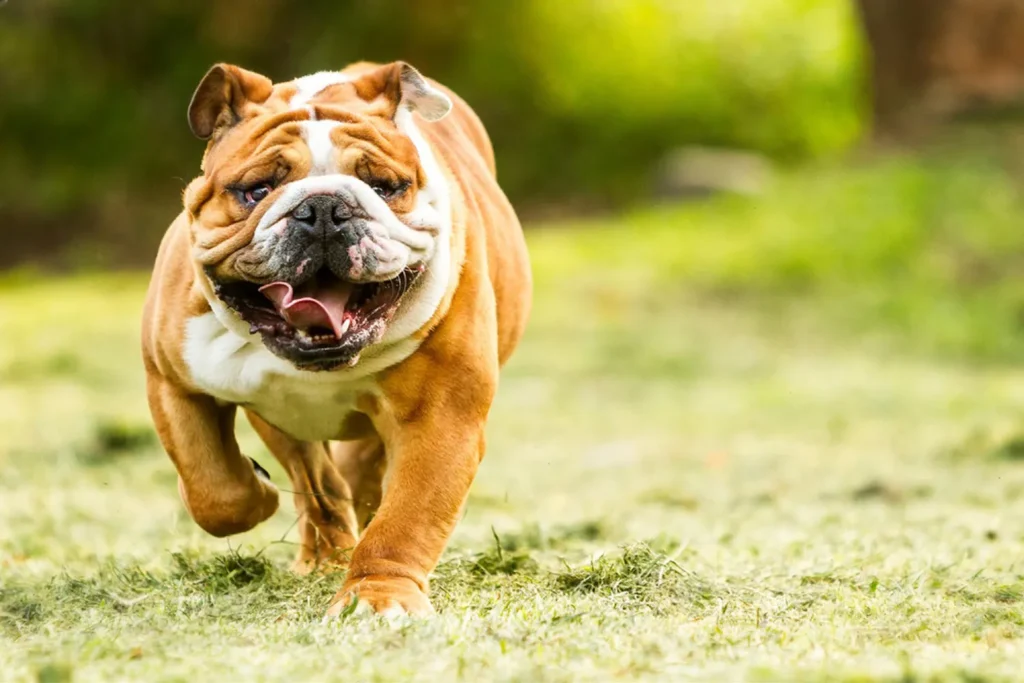
What is the average weight and height of a Bulldog?
English Bulldogs may be low to the ground, but they’re solid little powerhouses. Most stand around 14 to 15 inches at the shoulder and typically weigh 40 to 50 pounds males often closer to the upper end, females a bit lighter. Don’t let that compact frame fool you; they’re dense. I remember the first time I scooped up my friend’s Bulldog, Winston I thought, “No problem!” Two seconds later I felt like I was hoisting a bag of wet cement. Lesson learned. https://en.wikipedia.org/wiki/Bulldog
Because of that heft, this isn’t a dog you’ll want on your lap for hours. They absolutely love to cuddle, but it’s often more comfortable if they nap pressed against your leg rather than directly on top of you. If lifting is tough for you, plan ahead: a sturdy harness helps with guiding them up steps, a ramp can make getting into the car easier, and I’ve even used a rolling carrier for vet visits when my back wasn’t feeling brave. Keep in mind who else will be handling the dog kids and elderly family members might need a little help. Bulldogs are wonderful, snuggly companions, just be prepared for the “short but mighty” package that comes with them.
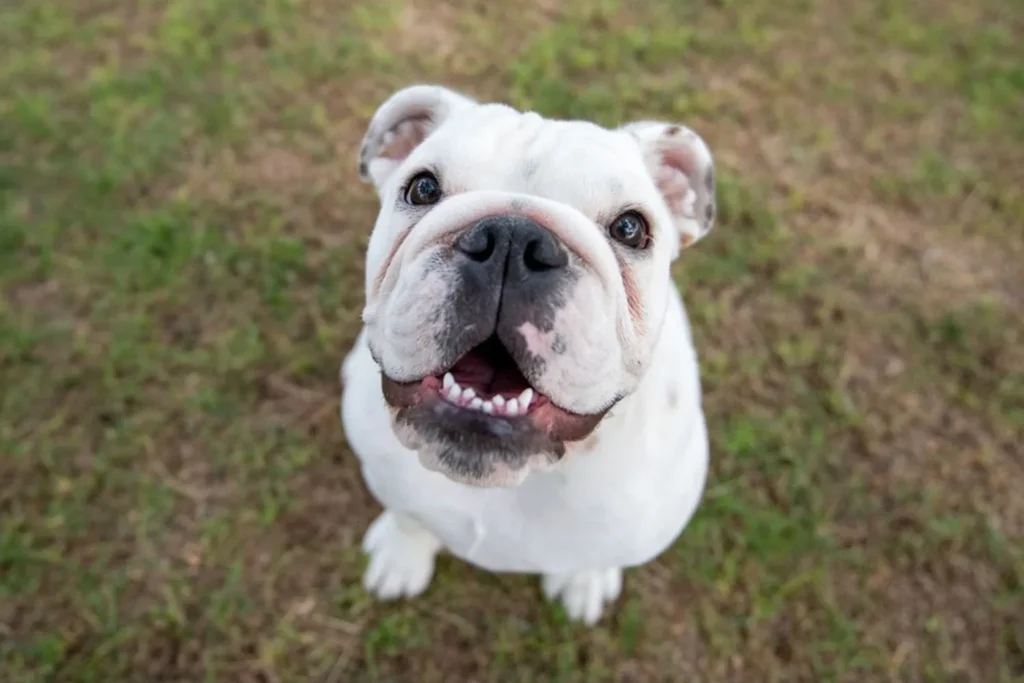
Are Bulldogs Easy to Train?
Short answer: it depends on your time and energy. Bulldogs are clever, but they can be stubborn in a way that makes you laugh and groan at the same time. They don’t thrive on marathon training sessions; they need lots of short, consistent practice and calm, steady guidance. When I brought my Bulldog home, I learned quickly that five focused minutes with treats and praise worked better than twenty minutes of repeating myself. Think quality over quantity, every single day, and be ready to repeat lessons with patience.
A few things help a ton: start early, keep sessions upbeat, and use rewards they truly love. Bulldogs are usually food motivated, so tiny, high value treats are your best friend. Keep cues simple, end on a win, and avoid getting into a power struggle. I like to mix training into daily life ask for a sit before meals, a wait at doors, and a calm “down” during TV time. Also, watch their energy and breathing; if your Bulldog is huffing or getting frustrated, take a break and try again later.
Puppy training classes are especially handy if you’re worried about nipping. Most Bulldog pups go through a mouthy stage, and a good trainer can show you bite inhibition games, safe redirection to chew toys, and how to handle those sharp little teeth without drama. In our class, the “trade” game was a lifesaver my pup happily swapped whatever he’d grabbed for a treat and a toy. The earlier you learn those tricks, the faster all those puppy hiccups smooth out.
How Do Bulldogs Behave? A Look at Their Temperament and Personality
English Bulldogs are famously lovable, big hearted companions who seem to think laps were invented just for them. Around kids, they’re usually gentle and patient more of a steady sidekick than a wild playmate. My neighbor’s Bulldog, Mabel, used to plop beside my son while he built Lego forts, offering quiet company and the occasional snort of approval. They thrive on being part of the family and often pick a favorite cozy spot (usually wherever you are).
That said, their temperament can vary from dog to dog. Some Bulldogs are mellow couch potatoes who nap like it’s a sport, while others are social butterflies who greet every visitor like an old friend. A bit of natural stubbornness is common, but they’re also wonderfully food motivated. Keep training short, cheerful, and consistent think five minute sessions with treats and praise and you’ll see that lovely “I’ve got this” Bulldog focus. Early socialization helps them feel confident with new people, places, and other pets.
They’re not big barkers, but expect a soundtrack of snorts, grumbles, and contented snores. Play can come in short, silly bursts those Bulldog zoomies are pure comedy so it’s wise to supervise around very young children to prevent accidental knockdowns. My simple tip: set a routine, provide soft places to rest, and sprinkle in puzzle toys for mental fun. If you want a loyal, affectionate buddy who brings warmth and a bit of lovable stubborn charm, a Bulldog fits the bill beautifully.
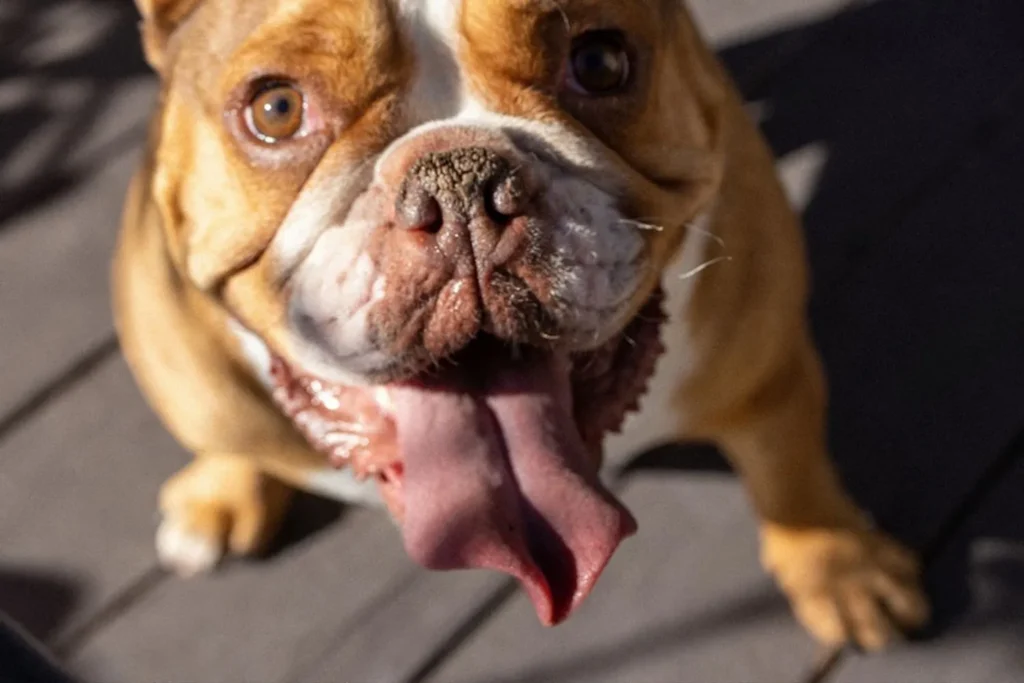
Do Bulldogs Have Common Health Issues?
Bulldogs are a well loved, well recognized breed with a Kennel Club standard, but like many distinctive dogs, it pays to know the health quirks that can come with their build and background. I always tell new Bulldog owners: a little awareness goes a long way toward keeping that wrinkly buddy comfortable and happy.
Here are some of the common concerns I watch for with my own Bulldogs and the ones in my circle:
– Loose skin and skin fold issues: Those adorable wrinkles can trap moisture and grime, which can lead to dermatitis and even muzzle acne. I keep a soft cloth by the door and do a quick wipe and dry after meals and walks. Switching from plastic to stainless steel bowls helped a friend’s Bulldog clear up stubborn chin acne almost overnight.
– Hip and elbow dysplasia: Their sturdy frames can hide joint trouble. Signs can be subtle hesitation on stairs, a funny “bunny hop,” or stiff mornings. Keeping them lean is the best gift you can give those joints. I use rugs on slippery floors and take steady, low impact walks rather than sprints or wild fetch sessions. Your vet can advise on supplements and the right exercise plan.
– Brachycephalic syndrome: This is common in French Bulldogs, and since Bulldogs are short nosed too, breathing comfort is something I monitor closely. Heavy snoring is one thing; struggling to catch their breath is another. I walk early or late in hot weather, use a harness (no pressure on the neck), and keep cooling mats handy. If breathing seems labored at rest or after mild activity, I book a vet check some dogs benefit from surgical evaluation.
– Other genetic issues: Eye problems like cherry eye, allergies, and certain heart or spine concerns can crop up. Not every Bulldog will face these, but regular vet visits and early intervention make a huge difference.
If you’re choosing a puppy, ask breeders about health testing and the parents’ hip/elbow scores and vet evaluations. Day to day, a simple routine clean folds, maintain a healthy weight, moderate exercise, and keep an eye on breathing has kept my Bulldogs active and comfy. And when in doubt, don’t wait on a question; a quick call to your vet can save a lot of worry.
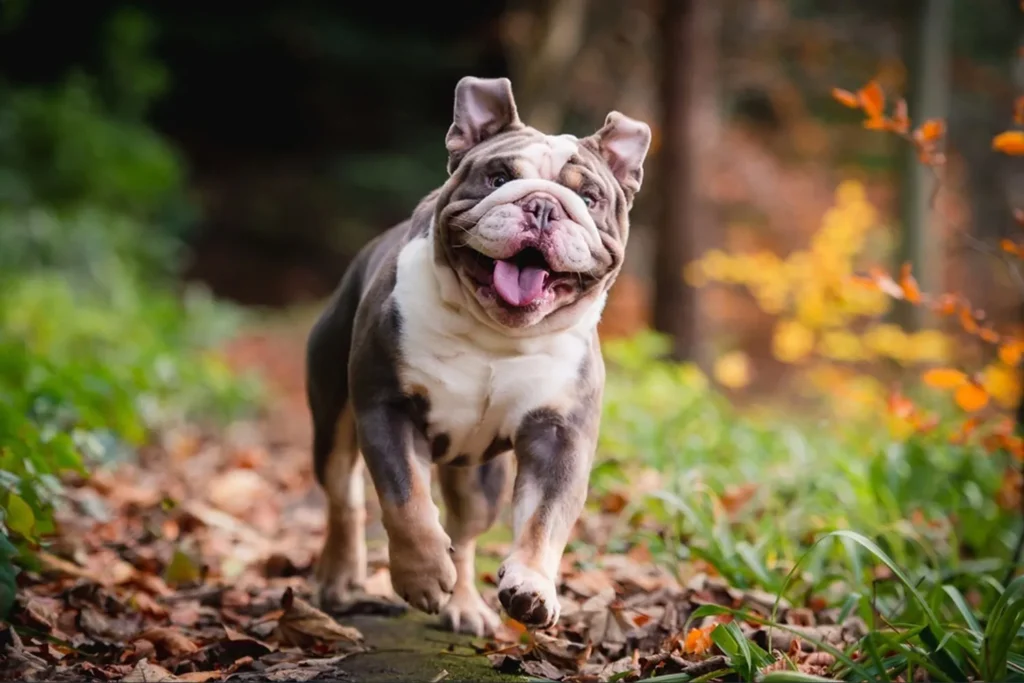
How Long Do English Bulldogs Live?
Bulldogs tend to pack a whole lot of love into a shorter window. Most English Bulldogs live around 8 to 10 years. A health study found that about 20% passed from cardiac related issues, 18% from cancer, and 9% from old age those seniors were typically around 10 to 11 years. That may not sound long compared to some breeds, but believe me, a decade with a Bulldog is a decade crammed with personality, naps, and hilarious snorts.
There’s plenty you can do to help your Bulldog make the most of those years. Regular vet check ups are your best friend I like to schedule them ahead of time and set calendar alerts so I don’t slip. Keeping them lean is huge; extra weight can stress the heart and joints. I switched to measured meals and used a puzzle feeder to slow things down, and it made a noticeable difference. Short, steady walks and gentle play are perfect; Bulldogs aren’t marathoners, and that’s okay. On warm days, I bring water, stick to shade, and keep a cooling mat at home these pups overheat easily.
Little habits add up: joint supplements recommended by your vet, omega-3s for overall wellness, and simple, healthy snacks like carrot coins or green beans. I also pay attention to breathing sounds; if the snoring suddenly changes or they seem winded faster than usual, it’s worth a call to the vet. My friend’s Bulldog, Daisy, made it to her 11th birthday, and her people swear by twice yearly check ups, a trim waistline, and a calm routine.
You can’t control everything, but you can stack the deck with good care and lots of love. Keep their days comfortable and predictable, celebrate the little milestones, and take those photos with the crinkly smiles you’ll be glad you did.
How Much Should You Feed a Bulldog?
Once an English Bulldog has graduated from the puppy stage and settled into adulthood, two meals a day is a sweet spot. Most adults do well on a total of about 3 to 4 cups of kibble per day, split between breakfast and dinner. Think of that as a starting range, not a hard rule. Bulldogs vary a lot in activity level and metabolism my old boy, Tank, loved the couch a little too much and stayed trim on the lower end, while my friend’s more energetic Bulldog needed closer to four cups.
What really helps is checking the calories per cup on the bag. Different foods can swing by 100 calories or more per cup. I once switched brands without noticing and wondered why Tank’s harness got snug turns out his new kibble was richer, and we had to dial back by half a cup. I keep a measuring cup in the bin so I’m not eyeballing it, and I do a quick weekly “feel test”: you should be able to feel ribs without pressing hard, and see a gentle waist. If that disappears, shave off a quarter cup; if your Bulldog looks too lean, add a little back.
Quality matters, too. Look for a complete and balanced formula from a reputable brand, and choose a recipe that agrees with your Bulldog’s tummy and skin. Many do well with simple, high-quality ingredients and a consistent routine. If you switch foods, transition over a week to avoid stomach upsets. Slow feeder bowls can help with gulping and gas, and don’t forget that treats count keep them modest and subtract a bit from meals if training snacks add up.
Your vet can help you tailor the plan for your dog’s age, weight goals, and any sensitivities. Start with two meals and that 3-4 cup range, then fine tune from there. Your Bulldog will tell you the rest with a happy wiggle and a comfy fitting harness.

Bulldog FAQs: Real Life Advice From a Devoted Owner
Do I need to be an experienced dog owner to train an English Bulldog?
There isn’t a simple yes or no here. Some first time owners do great with Bulldogs, but it helps to go in with patience and a plan. Bulldogs need consistent training, clear routines, and plenty of attention. They’re smart, but they can also be stubborn in an “I’ll do it… eventually” kind of way. I remember teaching my Bulldog the sit command he would pause, look at me, and then slowly sit as if he’d just made a big life decision. What worked best were short, upbeat sessions with high value treats and lots of praise. Keep lessons brief, end on a win, and socialize early. If you’re new to dogs, a reputable puppy class or a trainer who understands this breed can make all the difference.
Where can I find English Bulldog puppies?
Finding the right breeder matters a lot. There are many part-time breeders who mean well but don’t have the knowledge Bulldogs require. I suggest starting with the American Kennel Club. The AKC has breed club directories and resources to help you locate reputable breeders in your area. When you visit, ask to meet the puppies and, if possible, at least one parent. A good breeder will be transparent, answer your questions, and ask you a few of their own to ensure a good match. Red flags include cash only deals, no contracts, and breeders who won’t let you see where the dogs are raised. Be ready for a waitlist good things are worth waiting for. I once drove two hours to meet a breeder who checked every box, and it was the best decision I made.
Is it OK to adopt an adult Bulldog?
Absolutely. Adopting an older Bulldog can save a life and bring you a wonderful companion. Many adults are already house trained and past the wild puppy phase. A friend of mine adopted a five year old Bulldog who settled in like he’d always lived there he just needed a quiet spot, a routine, and a little time to decompress. When bringing home an adult, keep the first week calm, stick to a schedule, and introduce new people and pets gradually. Rescue groups and breed specific organizations often know a dog’s temperament and can help match you with the right personality for your home.
Is the English Bulldog breed generally friendly?
Yes, English Bulldogs are typically gentle, affectionate, and very people oriented. They love their families and can be wonderfully patient cuddle bugs. That said, they can get territorial or a bit jealous, especially when it comes to attention or favorite spots. I learned to prevent squabbles by setting clear rules like teaching a place command and managing high value items until good manners were solid. Early socialization helps them feel confident around visitors and other dogs, and it keeps that protective streak from tipping into bossy behavior. Read their body language, keep introductions relaxed, and reward calm, friendly choices. With love and consistency, you’ll have a loyal, goofy companion who makes every day brighter.
Disclaimer:
This article is for informational purposes only and doesn’t replace professional veterinary or training advice. Always consult a certified vet or dog trainer for guidance specific to your pup.
